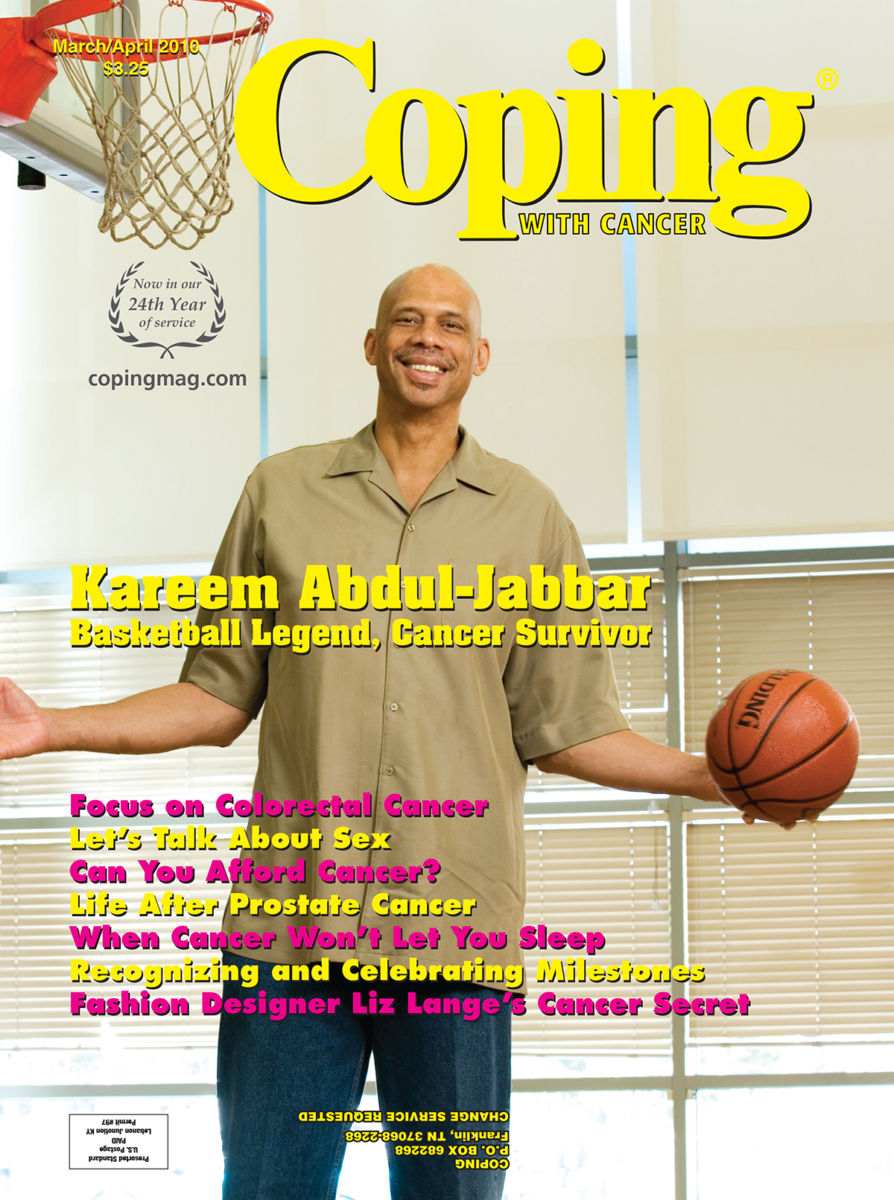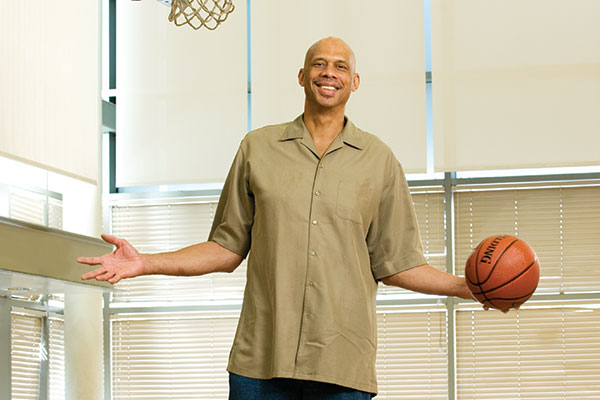Kareem Abdul-Jabbar: Cancer Survivor
Many words have been used to describe Kareem Abdul-Jabbar: sports legend, basketball god, most valuable player, champion. But another one has recently been added to the list: survivor.
by Laura Shipp
Kareem Abdul-Jabbar dominated the NBA for 20 years, from 1969 to 1989, perfecting his trademark move – the skyhook – a unique hook shot that few could block and even fewer could replicate. He led the UCLA Bruins to three NCAA championships and then went on to win one NBA championship with the Milwaukee Bucks and five more with the Los Angeles Lakers.
Standing at 7 feet, 2 inches tall, the six-time MVP is a legend, a basketball god, untouchable. Or at least he seemed untouchable. But that was before cancer.
Kareem was diagnosed with Philadelphia chromosome-positive chronic myeloid leukemia, or Ph+ CML, in December 2008. Notoriously media-elusive, he kept his diagnosis quiet for almost a year before coming out last November. But now that he’s opened up about his diagnosis, he says that people are seeing him in an interesting new light – as relatable, even.
Kareem recently let Coping® in on his life with cancer and how it hasn’t really changed all that much.
It all started with a few hot flashes that soon grew more intense and became uncomfortably persistent. He mentioned this to his doctor, who ordered blood tests. Kareem says, “The results came back, and my white blood cell count was sky high.” He was sent to a specialist for follow-up tests, and four days later, he was diagnosed with leukemia.
“It is a very frightening situation,” Kareem admits. “The word leukemia, to me at the time, was like a death sentence. Here I am thinking that maybe I am seeing the last days of my life.” But he soon learned that his type of cancer could be managed with targeted therapy.
A lot of people felt that I was unapproachable prior to this. Now I have people come up to me and tell me about how leukemia has affected them.

Now that he has been successfully managing his disease for over a year, the initial fear he felt has transformed into gratitude. “I am fortunate that my type of leukemia is manageable,” Kareem says. “I see my doctor on a regular basis, get my blood analyzed, take my meds, and I am able to continue to live my life in all the ways that are important to me. I can continue to coach and spend time with my family.
“There are some changes that I have had to make,” he adds. “But given the fact that the alternative would be a serious downturn in my health, I don’t find them to be a problem at all. It is just something that I have to incorporate into my lifestyle.”
Kareem’s positive outlook is immediately obvious. He attests that the numerous challenges he has faced on the court helped prepare him for this current one. “I am just adapting to a new challenge in my life,” he asserts. “It is something I’ve had to do my whole career as an athlete. The various opponents that I have faced on the basketball court presented different problems, and you have to be able to adjust in order to overcome these challenges. Facing CML is kind of the same way.”
Kareem is committed to raising awareness for this disease, partnering with Novartis Oncology to offer resources and hope to others with this disease. It is the reason he is now telling his story. And his sudden change of heart regarding the media has had an unexpected, yet welcome, upshot.
“A lot of people felt that I was unapproachable prior to this,” Kareem confides. “Now I have people come up to me and tell me about how leukemia has affected them, their loved ones, or people they have known or admired, and it gives us a new reason to relate.”
The legend, the god, the once untouchable Kareem Abdul-Jabbar has now exposed a more human side. His story is one many can relate to. Well, at least part of it. After all, he is still one of the greatest athletes of all time.

This article was published in Coping® with Cancer magazine, March/April 2010.


